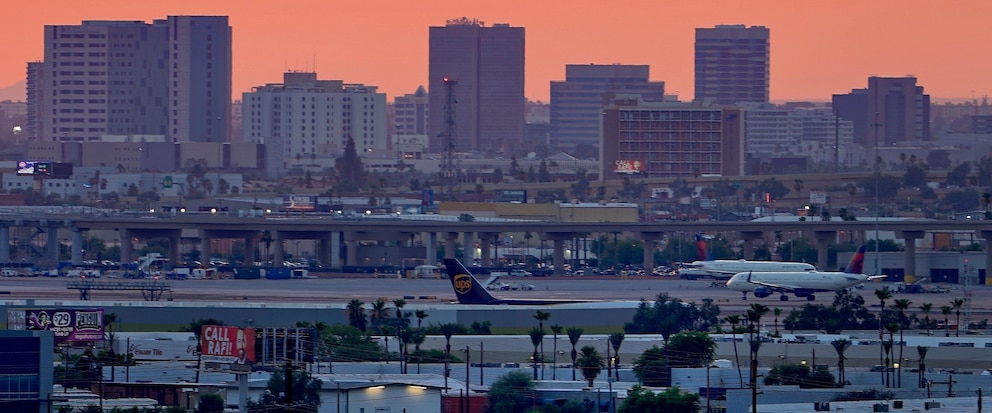Record-breaking Dry Monsoon Season in Arizona’s Largest City Since 1895, According to Weather Service
Arizona’s largest city, Phoenix, has experienced a historically dry monsoon season this year, according to the National Weather Service. The lack of rainfall has broken records dating back to 1895, leaving the region facing severe drought conditions and raising concerns about water scarcity and wildfires.
The monsoon season typically occurs between June and September in the southwestern United States, bringing much-needed moisture to the arid region. However, this year’s monsoon season has been exceptionally dry, with Phoenix receiving only 0.35 inches of rain since June, compared to the average of 2.71 inches during the same period.
The prolonged dry spell has resulted in a severe water deficit, exacerbating the already existing drought conditions in the state. According to the U.S. Drought Monitor, over 90% of Arizona is currently experiencing some level of drought, with more than half of the state classified under extreme or exceptional drought categories.
The lack of rainfall has significant implications for various sectors in Arizona. Agriculture, a vital industry in the state, is suffering from water shortages, impacting crop production and livestock. Farmers are forced to rely on groundwater reserves or face reduced yields and even crop failures.
Water scarcity also affects urban areas, as reservoirs and water sources continue to deplete. The Salt River Project, which supplies water to millions of residents in the Phoenix metropolitan area, has seen its reservoir levels drop significantly due to the lack of rainfall. Water restrictions and conservation measures are being implemented to ensure a sustainable supply for residents.
Another major concern arising from the dry monsoon season is the increased risk of wildfires. With vegetation drying out and becoming more susceptible to ignition, the chances of wildfires spreading rapidly are heightened. This poses a threat to both human lives and ecosystems, as well as causing air pollution and property damage.
Experts attribute the record-breaking dry monsoon season to a combination of factors, including climate change and natural climate variability. Rising temperatures due to climate change have intensified the evaporation rates, leading to drier conditions. Additionally, the presence of a La Niña weather pattern in the Pacific Ocean has contributed to the reduced monsoon activity in the region.
To address the challenges posed by the dry monsoon season and ongoing drought, Arizona has implemented various measures. These include water conservation campaigns, restrictions on outdoor water use, and increased investments in water infrastructure projects. The state is also exploring long-term solutions such as water recycling and desalination to ensure a sustainable water supply for its growing population.
The record-breaking dry monsoon season in Phoenix serves as a stark reminder of the urgent need to address climate change and its impacts. It highlights the vulnerability of arid regions to extreme weather events and emphasizes the importance of adopting sustainable practices to mitigate the effects of drought and water scarcity.
As Arizona continues to grapple with the consequences of this unprecedented dry monsoon season, it is crucial for policymakers, communities, and individuals to work together to find innovative solutions that promote water conservation, protect ecosystems, and build resilience in the face of a changing climate.



